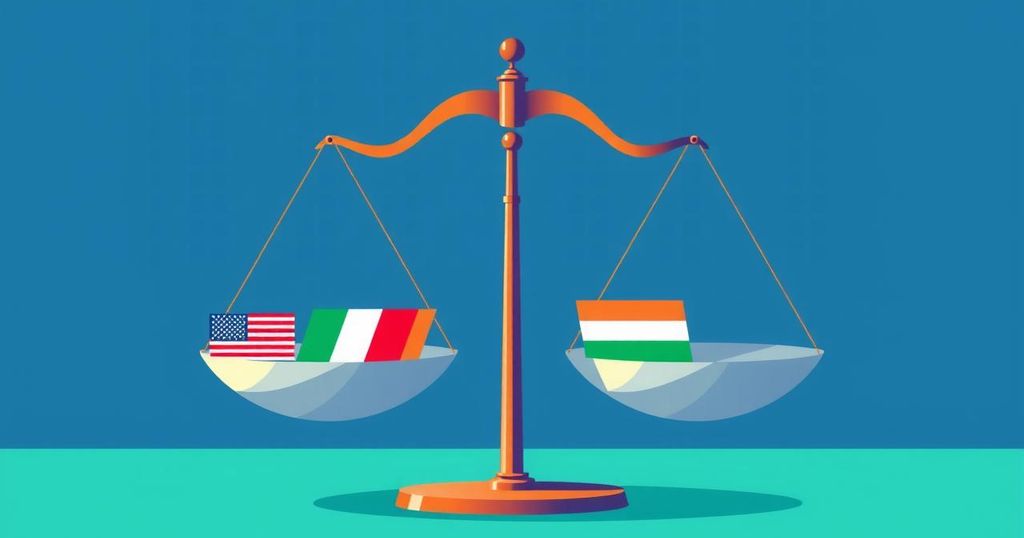The Indian government is assessing the economic effects of a 26% reciprocal tariff imposed by the U.S. This decision is part of a broader tariff policy addressing trade imbalances. While classified as a mixed outcome, current negotiations between India and the U.S. could alleviate some effects. President Trump criticized India’s trade practices while designating April 2 as “Liberation Day” for American industries.
The Government of India is presently assessing the economic implications of a 26% reciprocal tariff imposed by the United States. This announcement was confirmed by a high-ranking official from the commerce ministry, who shared insights with the Press Trust of India (PTI) on Thursday. This tariff policy initiated by U.S. President Donald Trump aims to address trade discrepancies with countries that impose higher tariffs on American exports.
As per the official, a universal 10% tariff will commence on all imports entering the United States beginning April 5. The additional 16% will be enforced from April 10, culminating in a total duty of 26% for Indian goods. The official remarked, “The ministry is analysing the impact of the announced tariffs… It is a mixed bag and not a setback for India,” indicating potential for negotiations to revise the duties favorably.
Currently, India and the United States are in talks regarding a bilateral trade agreement, with intentions to conclude the preliminary phase by September or October this year. The official expressed hope that ongoing diplomatic dialogues could alleviate some negative repercussions stemming from these tariffs.
President Trump introduced the tariffs on Tuesday evening, designating April 2 as “Liberation Day.” The President referenced a chart demonstrating the tariffs that India imposes on U.S. goods, which include trade barriers and currency valuation factors, leading to a 52% tariff. Subsequently, the U.S. proposed a reciprocal tariff of 26%, indicating it as a “discounted” rate.
Trump emphasized the significance of this decision, proclaiming, “This is Liberation Day, a long-awaited moment… We are going to make it wealthy, good, and wealthy.” He also criticized India’s trade policies, mentioning, “India, very, very tough… they charge us 52 percent.”
Furthermore, Trump introduced a chart illustrating the differing tariff rates imposed by various countries on U.S. goods, correlating these with the reciprocal tariffs that nations would now face.
In summary, India’s government is currently evaluating the impact of the U.S.’s newly imposed 26% reciprocal tariff, which aims to address perceived trade imbalances. While the administration considers the situation a mixed outcome with room for negotiation, ongoing discussions regarding a bilateral trade agreement may help mitigate adverse effects. President Trump’s tariffs, deemed a response to high Indian tariffs on American products, signal an essential juncture in U.S.-India trade relations.
Original Source: www.business-standard.com






